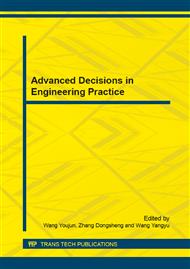p.69
p.75
p.81
p.87
p.93
p.99
p.105
p.109
p.115
Mesh Dynamics Analysis of Gear Shaving Cutter Research Based on ADAMS Software
Abstract:
Gear shaving machining is the one way of gear finish machining; this machining processing is applied in the gear manufacturing widely because of its high efficiency and low cost. Due to the use of standard involutes gear shaving cutter for shaving, the work piece profile nodes occur with varying degrees of "concave" phenomenon. This profile not only affects the gear transmission accuracy, but also can increase the transmission noise, shorten the service life of the gear. In this paper, by using ADAMS software analysis tool, the shaving cutter gear the non-backlash meshing process contact simulation analysis, reached along the tooth profile curve of the contact pressure distribution results. And in the ADAMS environment Post / Process module, in order to meet the needs of the whole tooth profile curve approach contact pressure as the goal, the shaving cutter gear meshing of the maximum contact pressure was carried out based on the experimental design optimization, which conducted the tooth profile modification.
Info:
Periodical:
Pages:
93-97
Citation:
Online since:
April 2015
Authors:
Price:
Сopyright:
© 2015 Trans Tech Publications Ltd. All Rights Reserved
Share:
Citation:


